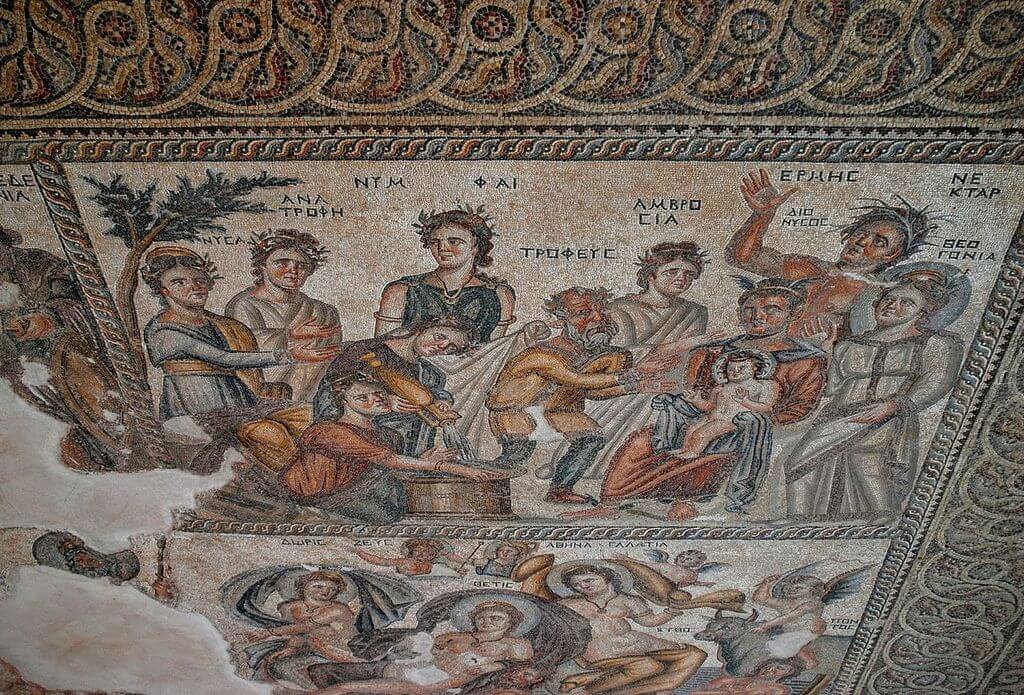Paphos Archaeological Park (also Kato Pafos Archaeological Park) contains the major part of the important ancient Greek and Roman City and is located in Paphos, southwest Cyprus. The park, still under excavation, is within the Nea Pafos ("New Paphos") section of the coastal city.
Its sites and monuments date from prehistoric times through the Middle Ages. Of the most significant remains so far discovered are four large and elaborate Roman villas: the House of Dionysos, the House of Orpheus, the House of Aion and the House of Theseus, all with superb preserved mosaic floors.
In addition, excavations have uncovered an Agora, Asklipieion, Basilica, Odeion, Hellenistic-Roman Theatre, and a necropolis known as the "Tombs of the Kings".
In 1980 Nea Pafos was inscribed on the World Heritage List of UNESCO for its outstanding ancient remains.
The House of Dionysos
This rich building belongs to the Greco-Roman type where the rooms are arranged around a central court, which functioned as the core of the house. It seems that the house was built at the end of the 2nd century A.D. and was destroyed and abandoned after the earthquakes of the 4th century A.D. The House of Dionysus occupies 2000sq. metres of which 556 are covered with mosaic floors decorated with mythological, vintage and hunting scenes. At the House's entrance these is a pebble mosaic representing the mythical sea-monster Scylla that belonged to a Hellenistic building found below the later Roman one.

By Wolfgang Sauber - Own work, CC BY-SA 3.0, https://commons.wikimedia.org/w/index.php?curid=18274993
House of Aion
It belongs to the type of the wealthy Greco-Roman Houses with a central court similar to the House of Dionysus. It dates to the late 2nd /early 3rd century A.D. The building´s main room, the reception hall, is decorated with a mosaic floor depicting Orpheus among the beasts. The next room´s mosaic floor bears two panels, one representing Hercules and the Lion of Nemea, and the other an Amazon with her horse.

By George M. Groutas from Dali, Nicosia, Cyprus - Ψηφιδωτά της Πάφου, CC BY 2.0, https://commons.wikimedia.org/w/index.php?curid=42183343



